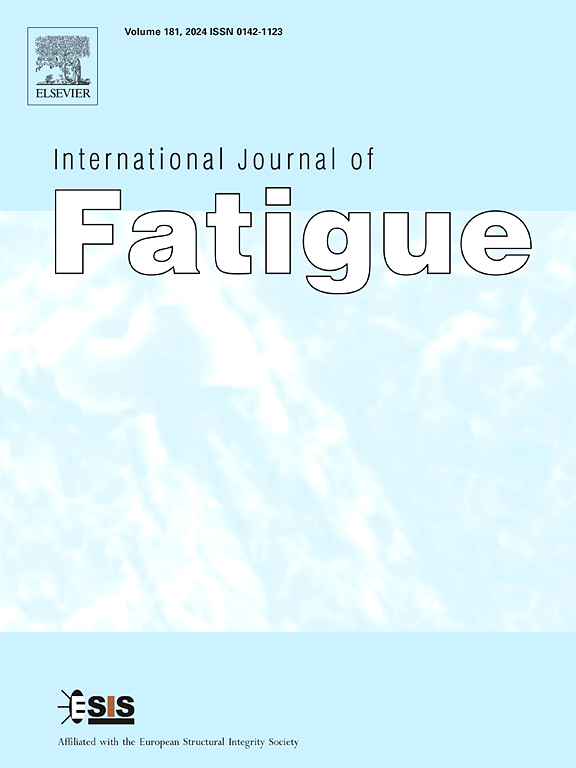A conditional probability density function model for fatigue damage estimation in broadband non-Gaussian stochastic processes
IF 5.7
2区 材料科学
Q1 ENGINEERING, MECHANICAL
引用次数: 0
Abstract
To address the issue of the inability of the probability density function of stress amplitude under Gaussian processes to be applied to fatigue damage estimation in non-Gaussian processes, a conditional probability density function model of the mean given amplitude is developed in this paper. The relation between the unknown parameter of the conditional probability density function and the bandwidth parameters of stochastic processes is established utilizing a four-parameter nonlinear regression model. The conditional probability density function can be multiplied with an approximate probability density function model of rainflow amplitude under broadband Gaussian stochastic processes to form a joint probability density function of amplitude and mean. By introducing the Hermite transformation function, the joint probability density function can be extended to fatigue damage estimation in broadband non-Gaussian stochastic processes. Through case studies of constructed standard spectra and the vibration response of 2A12 aluminum alloy edge-notch specimens, the accuracy of the proposed method is verified by comparisons with the non-Gaussian Tovo-Benasciutti method and the time-domain method.
求助全文
约1分钟内获得全文
求助全文
来源期刊

International Journal of Fatigue
工程技术-材料科学:综合
CiteScore
10.70
自引率
21.70%
发文量
619
审稿时长
58 days
期刊介绍:
Typical subjects discussed in International Journal of Fatigue address:
Novel fatigue testing and characterization methods (new kinds of fatigue tests, critical evaluation of existing methods, in situ measurement of fatigue degradation, non-contact field measurements)
Multiaxial fatigue and complex loading effects of materials and structures, exploring state-of-the-art concepts in degradation under cyclic loading
Fatigue in the very high cycle regime, including failure mode transitions from surface to subsurface, effects of surface treatment, processing, and loading conditions
Modeling (including degradation processes and related driving forces, multiscale/multi-resolution methods, computational hierarchical and concurrent methods for coupled component and material responses, novel methods for notch root analysis, fracture mechanics, damage mechanics, crack growth kinetics, life prediction and durability, and prediction of stochastic fatigue behavior reflecting microstructure and service conditions)
Models for early stages of fatigue crack formation and growth that explicitly consider microstructure and relevant materials science aspects
Understanding the influence or manufacturing and processing route on fatigue degradation, and embedding this understanding in more predictive schemes for mitigation and design against fatigue
Prognosis and damage state awareness (including sensors, monitoring, methodology, interactive control, accelerated methods, data interpretation)
Applications of technologies associated with fatigue and their implications for structural integrity and reliability. This includes issues related to design, operation and maintenance, i.e., life cycle engineering
Smart materials and structures that can sense and mitigate fatigue degradation
Fatigue of devices and structures at small scales, including effects of process route and surfaces/interfaces.
 求助内容:
求助内容: 应助结果提醒方式:
应助结果提醒方式:


